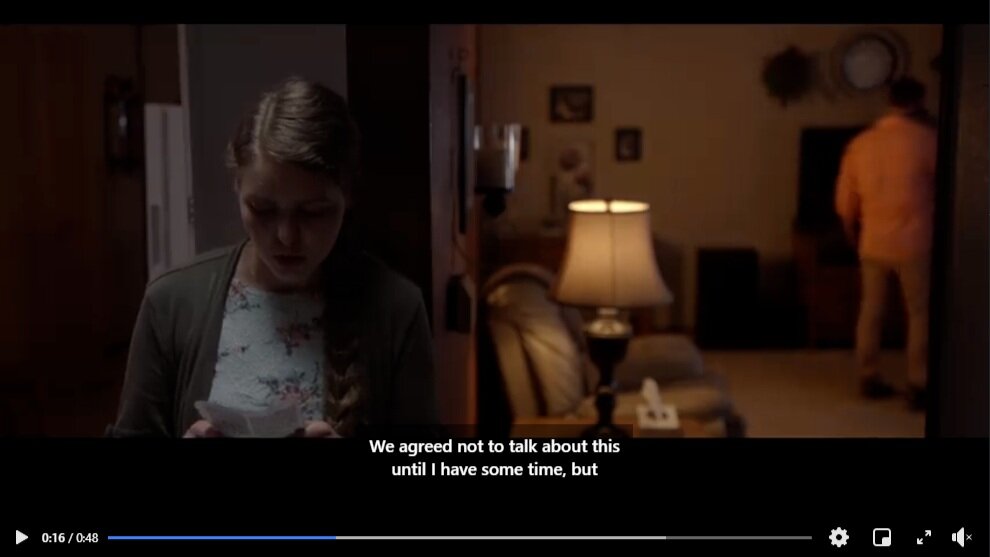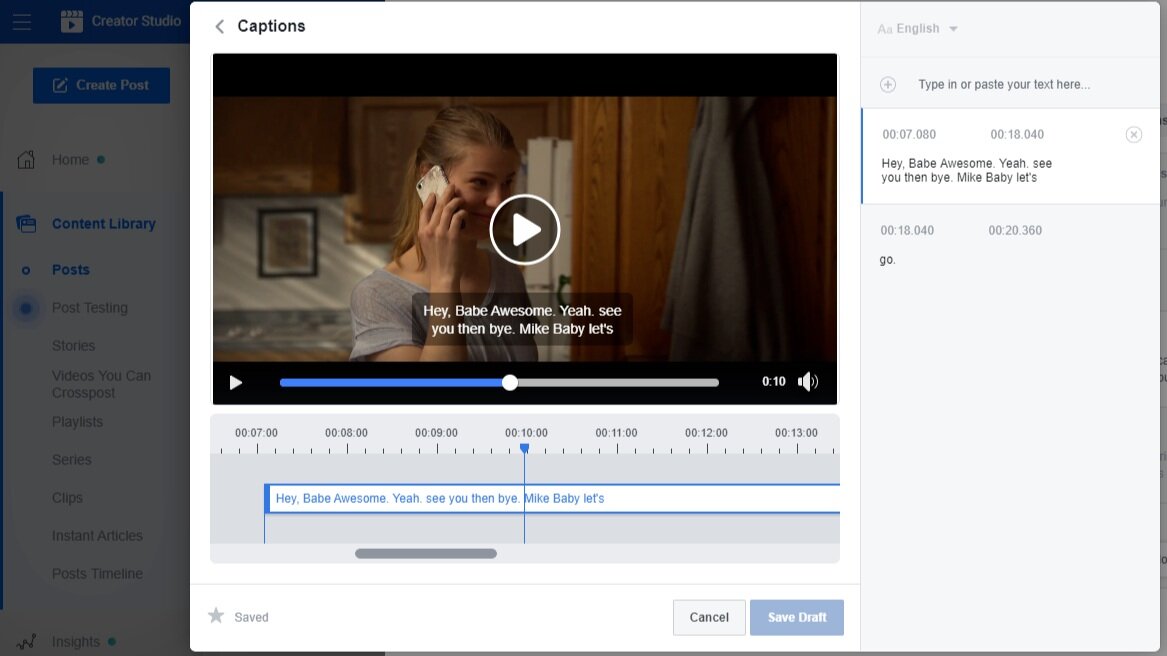See What I'm Saying: Reaching a Forgotten Audience
Media is everywhere we look. Whether it’s a video on YouTube, an ad on your Facebook feed, or a TV commercial we are bombarded by videos. Yet over the last few years I’ve come to find that many business owners often forget about an important audience when creating their content. That audience is the deaf and hard-of-hearing. To reach them is easy, yet many business owners don’t do it or know how to do it. So how do you reach them? Captions.
Captions can be seen displayed on this Facebook video.
Before we dive into how you can reach people through captions there are some terms you must understand. First you need to know the difference between subtitles and captions.
Subtitles: The translated dialogue of a video so that people who speak a different language can understand what is being said. These only contain dialogue.
Captions: The transcription of audio for people who are deaf or hard-of-hearing. These include all relevant info including dialogue, speaker ID’s, sound effects and music descriptions.
So now that you know the difference between subtitles and captions you can easily choose which of these you might need or want for a project. Beyond that, there is one other difference you need to know and that is the difference between closed and open captions.
Open Captions: Sometimes called burnt-in captions, these captions are always on and are usually used in places where the viewer doesn’t have control over the captions function.
Closed Captions: Captions where the viewer has the ability to turn them on or off as needed.
So now that you know the difference how do you choose which one your project needs? Some of that is going to come down to knowing your audience and their needs to best receive the message of the film. This can be especially important when deciding if you need subtitles or captions.
Nowadays though I highly recommend to all my clients that they use captions. In fact, I just build into the cost of the project to create them for the client. The reason being is that we are seeing online platforms push videos that have captions more than they will videos without captions because of captioned videos being able to reach a broader audience. On top of that, a study done in June of 2020 found that online videos with captions generally got a 12% increase in viewership compared to videos without captions.
The final aspect to deciding what type of captions you need is to know where you are going to use the video as different platforms have different requirements. Let’s jump in and look briefly at some of those differences between platforms.
YOUTUBE
The first online platform that probably comes to mind when captions are brought up is YouTube. YouTube is pretty straight forward when it comes to captions. People have the ability to turn them on and off while watching videos so open captions are optional. Captions can be added and removed from the platform whenever, so even if you have a video that is several years old, you could go back and make captions for it. All adding or removing is done on the back end and simply requires an srt. file.
There’s not much to say about Twitter. Especially since its not really thought of as a video platform. To add captions to direct to Twitter uploads you have to be a part of their Media Studio which requires having a partner manager. Otherwise you have to upload a video that features open captions or just provide a link to a video with captions.
Instagram is the most unique platform when it comes to captions. If you’re wanting captions for a video you are uploading straight to your feed then currently you will have to use open captions. You can also add captions to videos in your Instagram Stories however these require the help of third-party apps. Apps that can help with that include (Apple Clips, Rev and Clipomatic). As a disclaimer, I have not used any of these apps personally, they were just the main ones listed when researching this topic. When it comes to IGTV, currently you can either have open captions for your video or auto-generate captions during the upload process. As of the writing of this post you cannot go back and auto-generate captions for previous IGTV uploads.
Facebook has the most flexibility when it comes to captions. First, the platform will automatically turn captions on if a video has them when the viewer tries to listen without sound. You can add or remove captions as needed to a video through the use of an srt. file like on YouTube. Facebook also has an auto-generate feature like Instagram. If you do use the auto-generate I highly recommend you go view and edit them as the AI is not always correct. Finally you can also create your own captions straight from scratch in the Facebook caption editor if you have the time.
Facebook’s Caption Editor
So as you can see while having captions is important it really does take knowing your audience so that you know what types of captions you need based on the platforms you are using and the audience you’re trying to reach. Now-a-days most video production companies are going to be able to help you create captions when they create a project for you.
However if you are creating a video without the help of a production company, the auto-generate options on some sites can work just as well. The other route to creating captions yourself would be hiring a captioning company to create them. To go through them you simply upload your video and they will create the captions in whatever way you need. Usually there will still be a way for you to check the captions before downloading the final file for errors. Generally these types of places charge per minute of video. Two sites that I recommend are See What I’m Saying and Rev.com.
In closing, I hope this post has been of help to you in understanding how captions work and how they can help you grow your audience or reach your current audience better than before.


